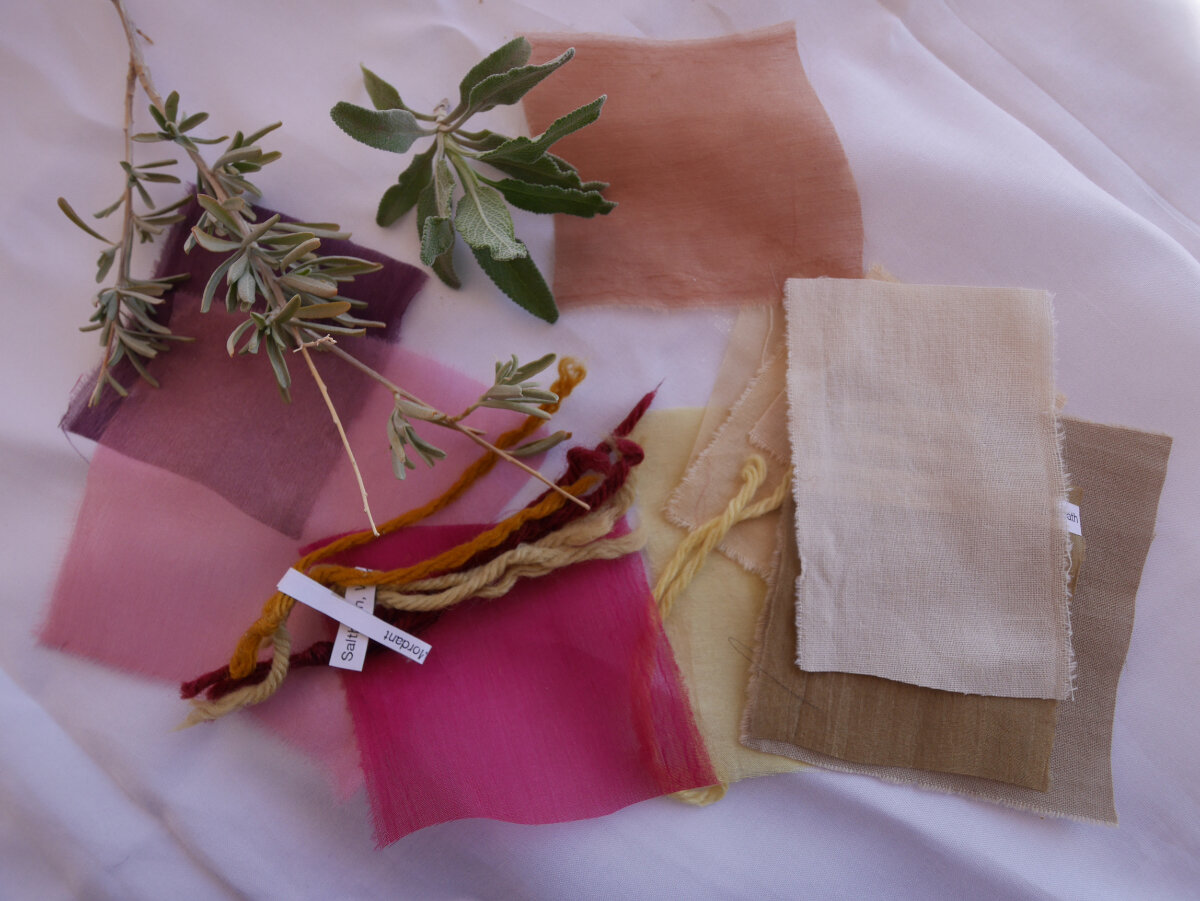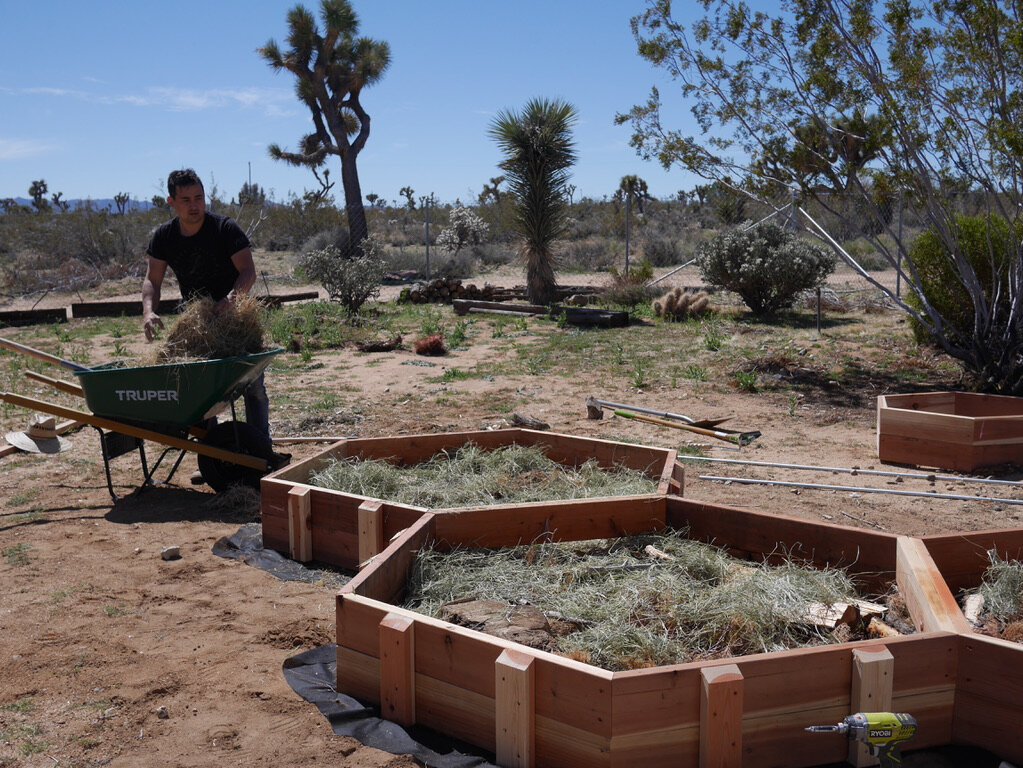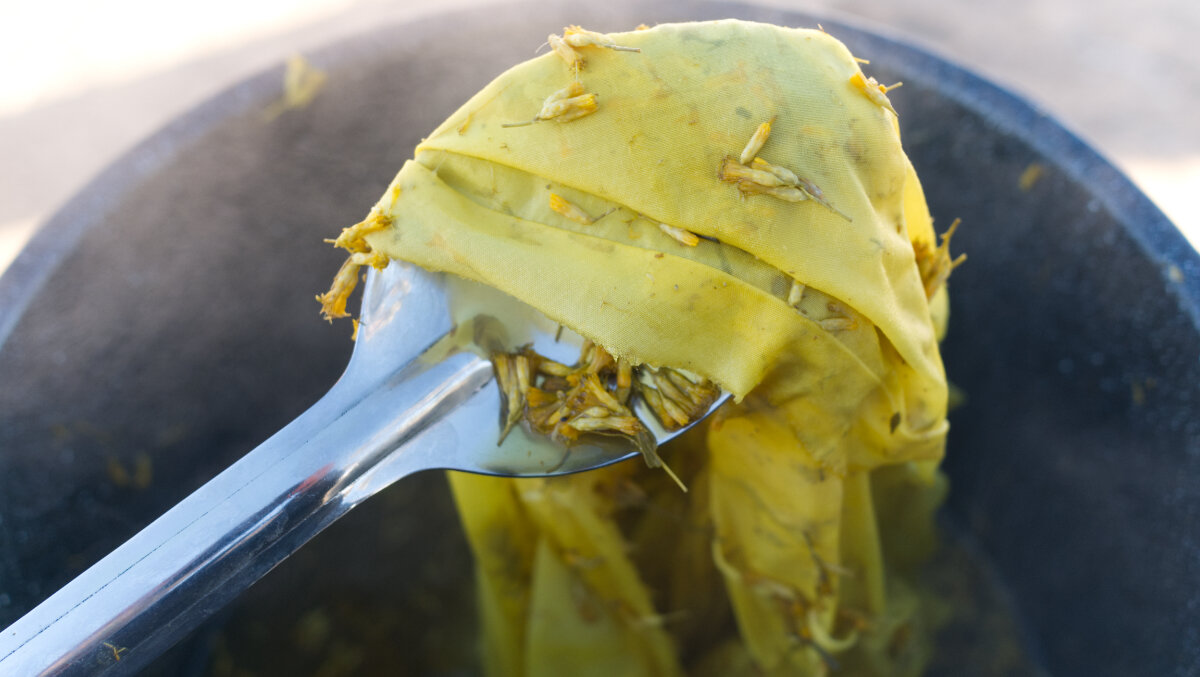Views from the High Desert Observatory
High Desert Observatory
Situated in the hills of the Mojave desert, the High Desert Observatory functions as an education space, art studio and gallery. We offer workshops and events that focus on sustainable craft, art, textiles, basketry, glass and aromatics.
Interview with Emily & Michael Endo
Questions by Kimberly Corday
You are both originally from the Pacific Coast. What prompted you to move to Yucca Valley?
We were both drawn to the open space of the desert, the ecosystem, and the creative community.
What is it about the Mojave Desert that you think inspires creatives of disparate mediums?
The desert is such an extreme and multifaceted environment, it allows for all sorts of artistic responses and inquiries. The desert can appear empty but it is teeming with life. I think artists respond to this combination.
Your workshops place importance on sustainable practices. In what ways does the team at High Desert Observatory maintain a minimal-waste lifestyle?
We are working towards making our lifestyle as integrated as possible. We compost and collect rainwater. The water from our home and studio is reused to water the trees and the garden. We are also designing more classes and projects that incorporate materials considered waste - for example, this spring we are teaching a workshop on making your own drawing ink using kitchen compost scraps such as avocado pits and peels, peach pits, onion skins, and pomegranate peels.
This year we will begin transforming our space following permaculture design principles. The previous owner used the 2.5 acres that surround our studio as an ATV track and removed most of the local plant life. Beginning with some minor adjustments to “plant the rain” - create earthworks to reverse the degradation of the soil - our aim is to create more habitat for wildlife while also providing our home and studio with food and materials.
Incense-making
You also run a curatorial project Dust to Dust. How do you go about discovering and selecting artists to exhibit?
We are interested in highlighting the work of emerging and established artists who incorporate materiality with critical and playful dialogue. Social media plays a big role in discovering emerging artists, but mostly we look to our communities - offline and online - to seek out unique voices that align with our curatorial mission.
As project directors, how have you responded to the demand for demographic curation?
Our curatorial projects are on hiatus at the moment, but as we expand our studio and plan future exhibitions, we look to opening up our space to a variety of voices. Representation, we believe, is most important in the decision making process. So, just as it isn’t our place to tell other people’s stories, it isn’t for us to decide who should speak for other people. In that spirit, we aim to collaborate with or give over our space and time to other curators, artists, and organizers.
Finding the right collaborator can be a daunting endeavor. How did you two meet? What advice would you give an artist in search of a business partner?
We met in graduate school and developed a working relationship after reconnecting in Portland, Oregon, where we both found ourselves after graduating.
Great partnerships require a dreamer and a doer, but these partnerships only last if these roles are interchangeable amongst the partners. We both have strengths and weaknesses and we need to be flexible enough to know when to lead and when to support. The most important thing is trust - trust that they will bring their best to the table and that they will follow-through.
Steam distilling hydrosols and essential oil from pine trees
Aside from managing your multifunctional space, you’re also active studio artists. How do your personal practices inform your roles as entrepreneurs? How much do you attribute your success to your fine art background?
As artists we want to believe fully in what we are doing and that carries over into our business as well. I think our fine art background has taught us to be flexible, resilient, and collaborative; moreover, we essentially have degrees in creative problem solving. This combined with the fact that failure and rejection are major components of being an artist, gives us the courage to take risks.
What do you enjoy most about running an art space?
Our favorite part of running an art space is connecting with other artists. Curating also allows you to spend time with concepts and themes outside of your own work, which can be very liberating.
I’m curious to hear how you adapted to the pandemic on both a personal and professional level.
Professionally, we made the decision to cancel all of our in-person classes and travel plans fairly early-on. Luckily, we had already started investing in video equipment to record our workshops and we were able to pivot to online workshops. Personally, we are fortunate to live here in the desert where we have plenty of open space. We look forward to reconnecting with our community in person, but in the meantime we have tried to remain positive and use the time to further our goals.
Amaranth plants growing in the garden
What are some silver linings that have come out of this time?
Initially we offered online classes as an alternative to our in person workshops. Our goal was to eventually switch back and continue what we were planning pre-pandemic. The push to put our programming online, however, has allowed us to connect to a wider and more diverse community and has become an important part of how we want to move forward.
What are your plans for 2021?
This year we are starting the process of integrating permaculture design principles into our program, expanding our online offerings, and remaining flexible and responsive to what is happening locally and globally.







